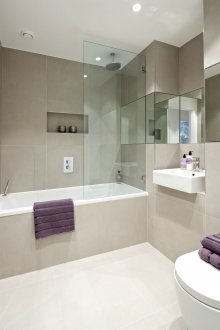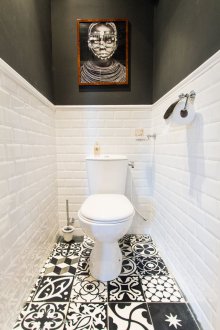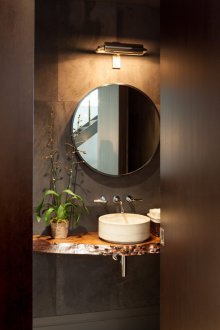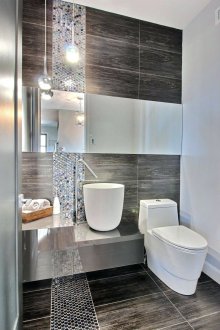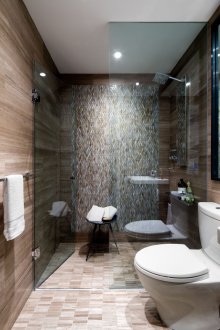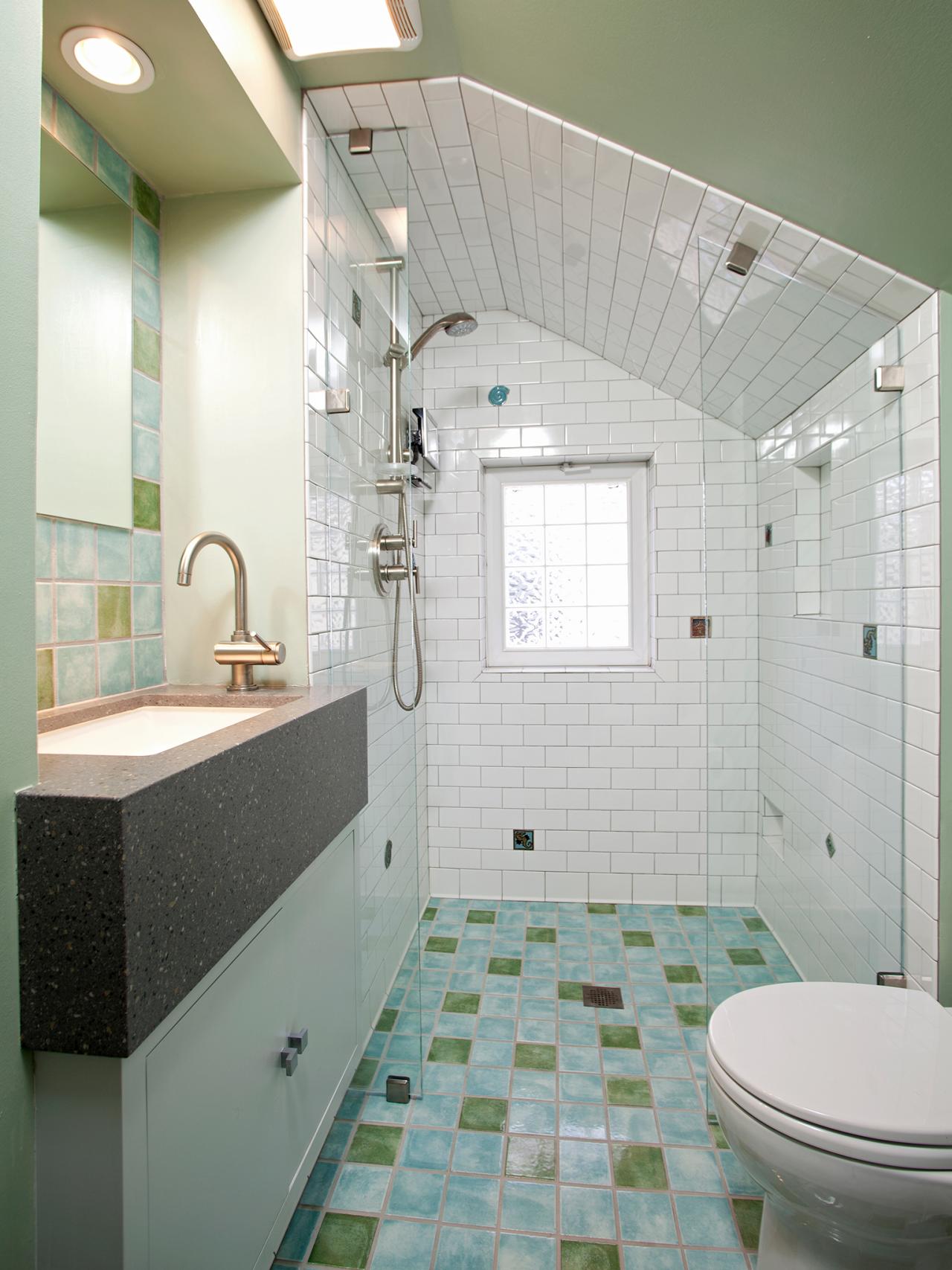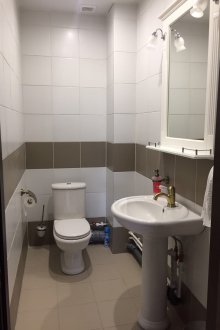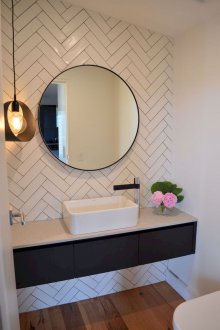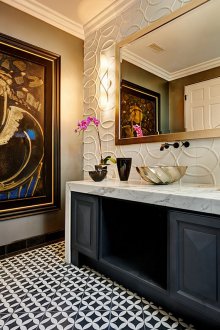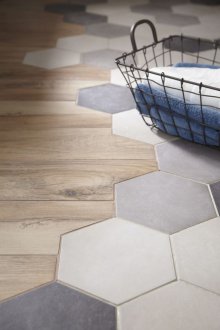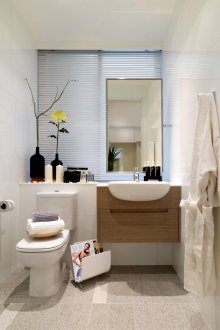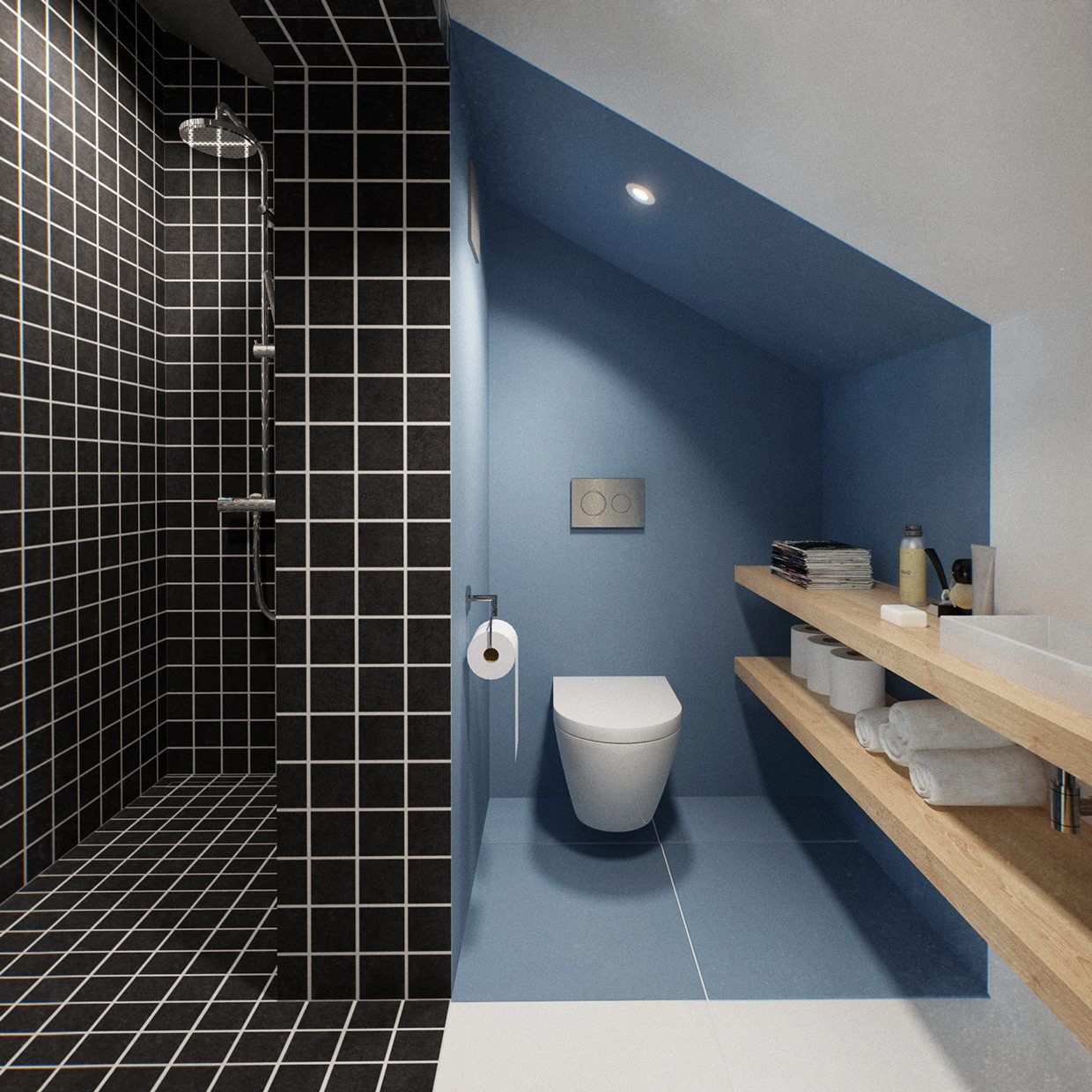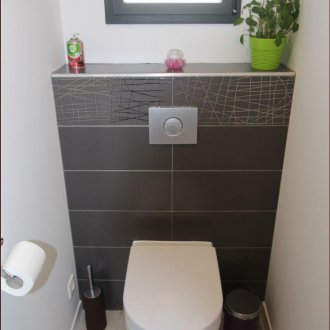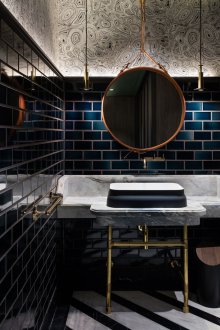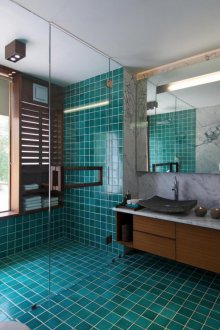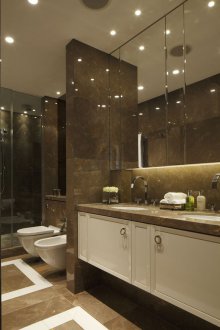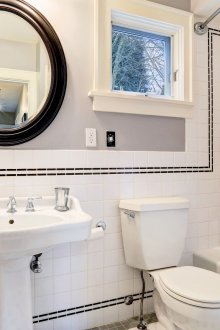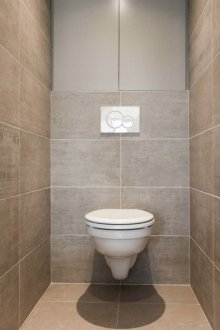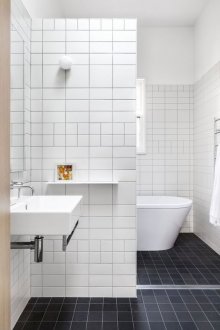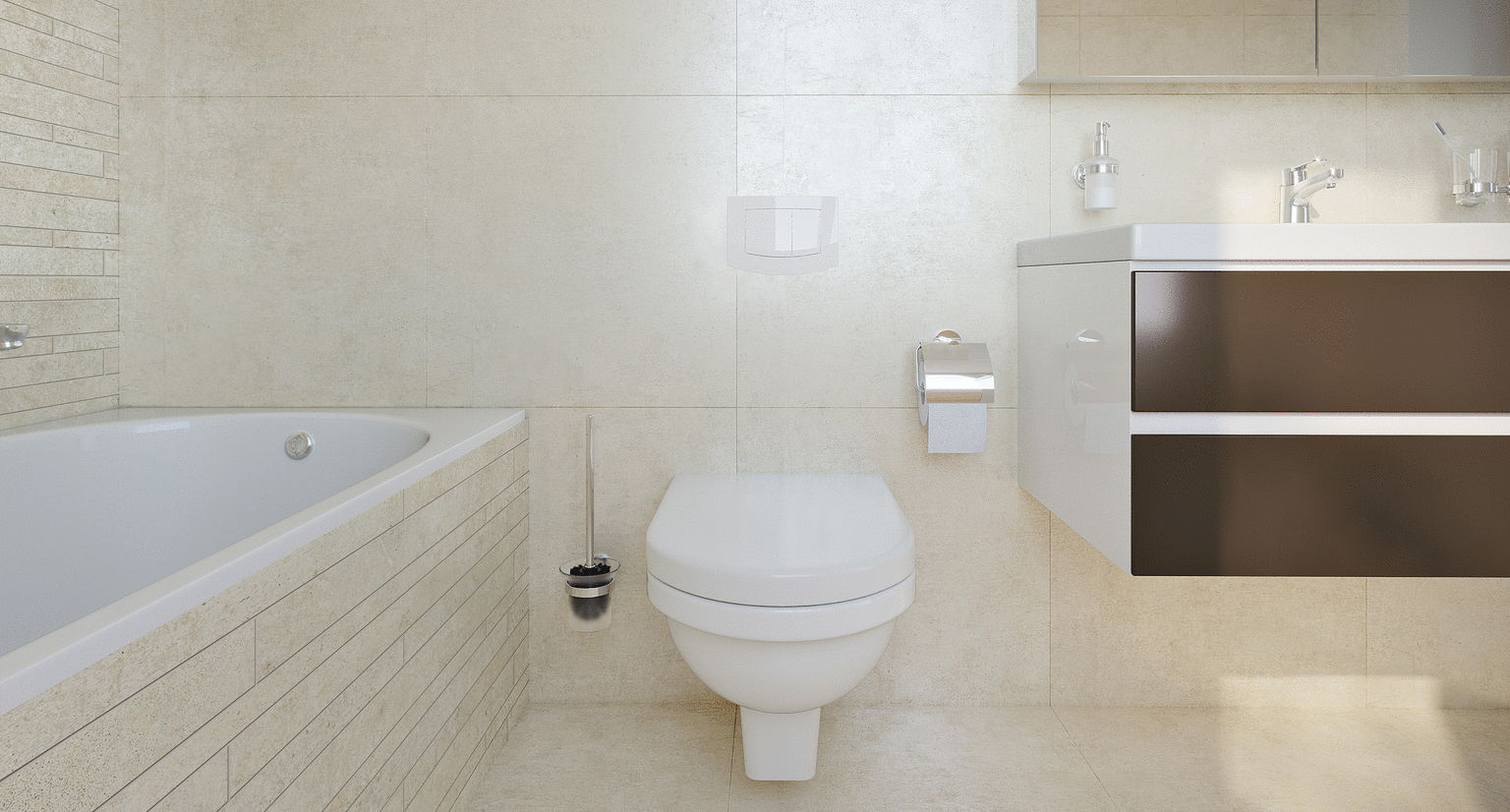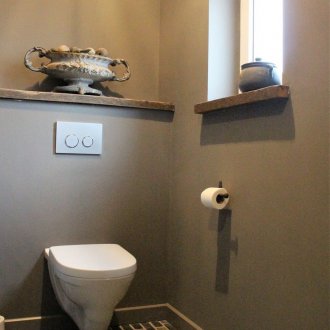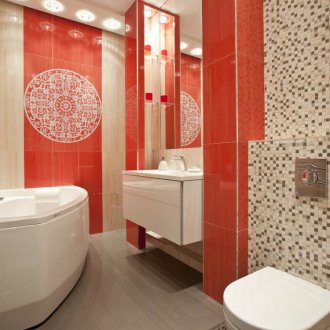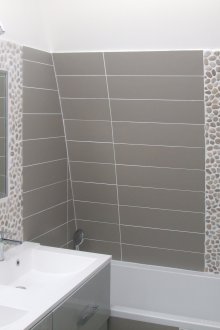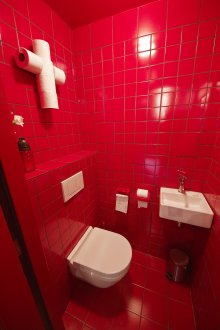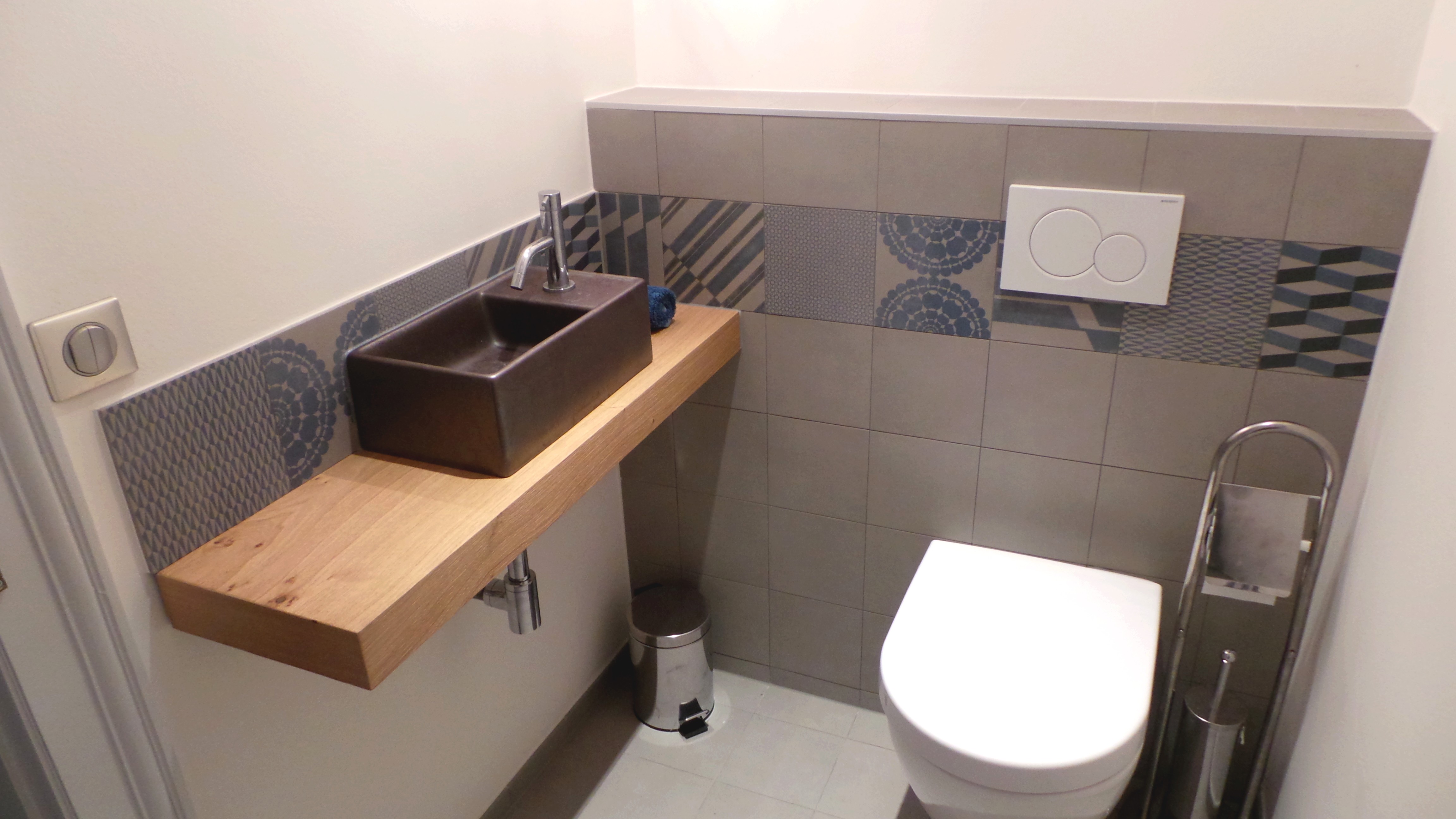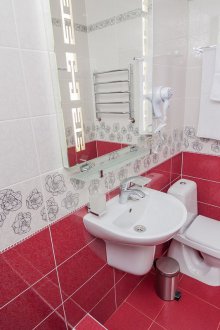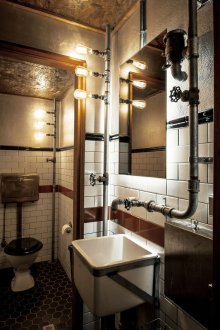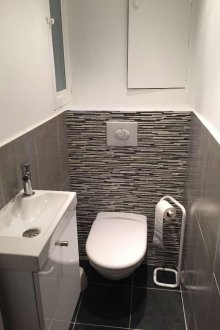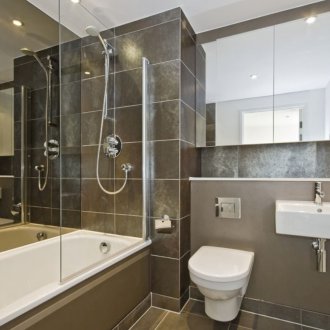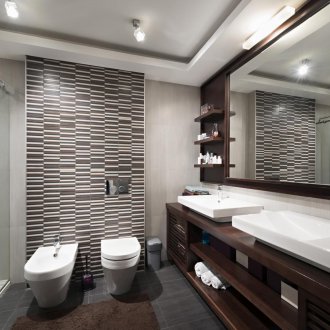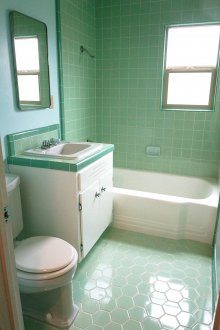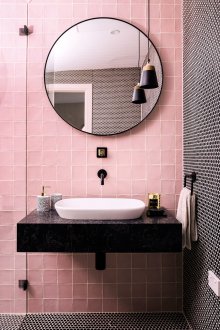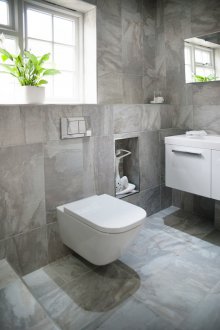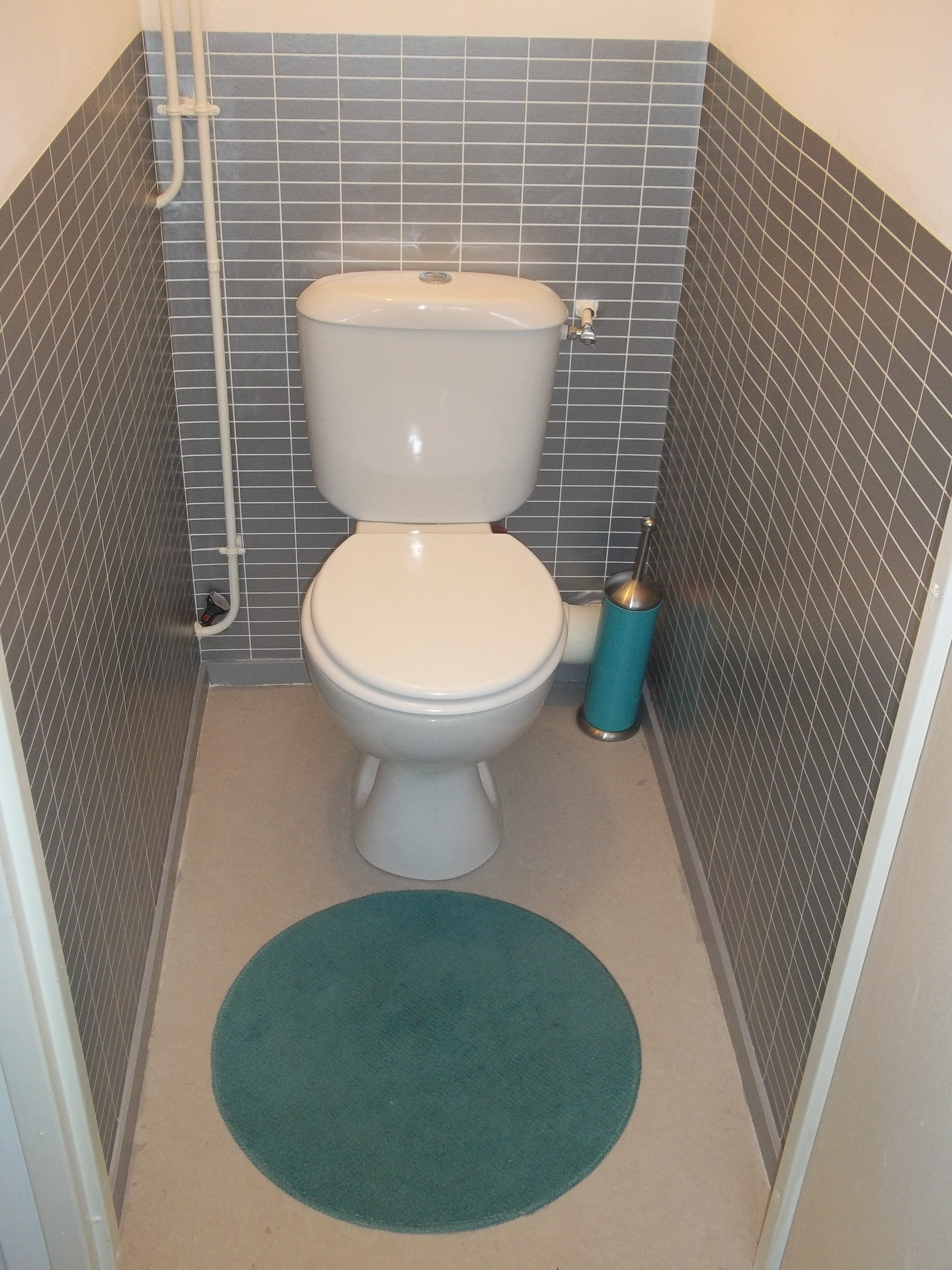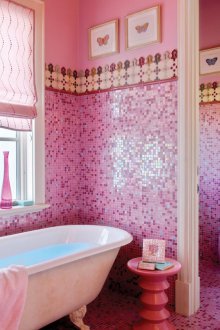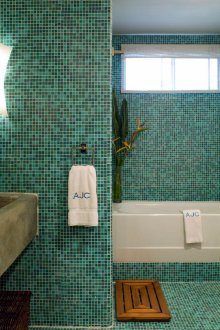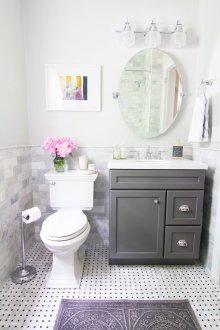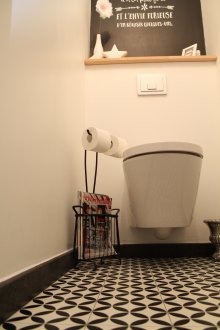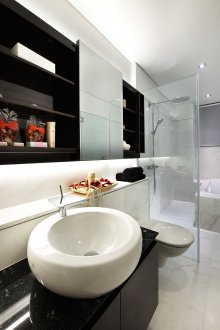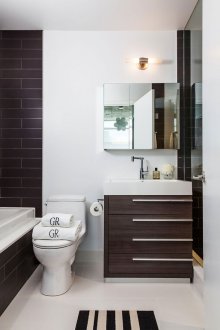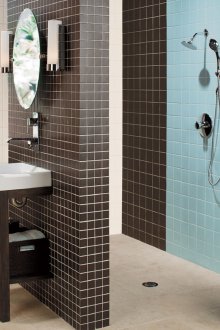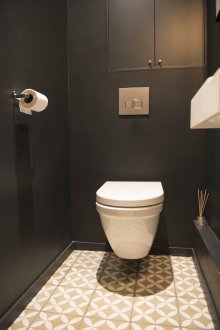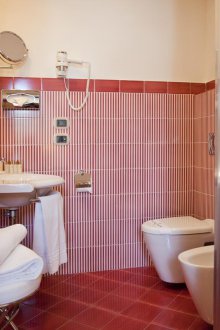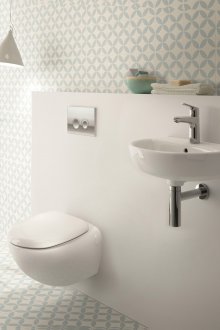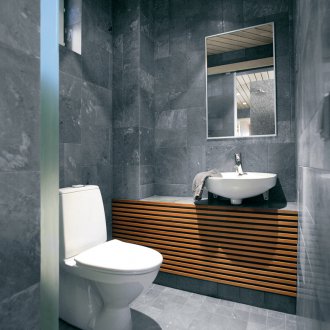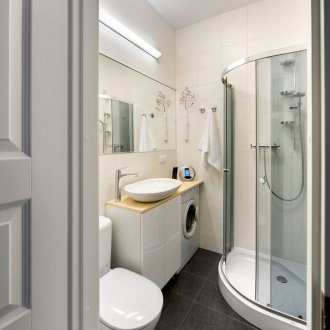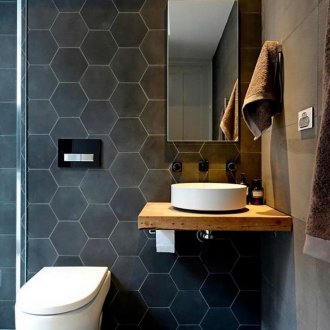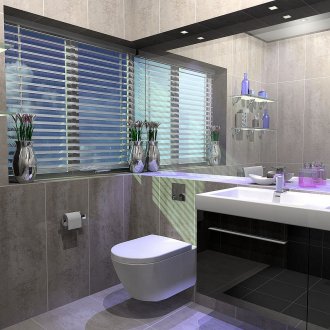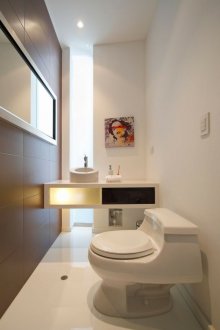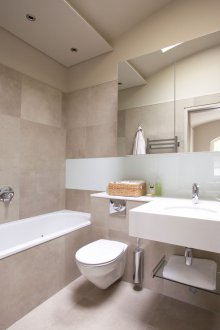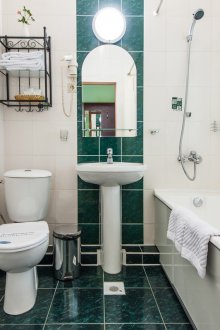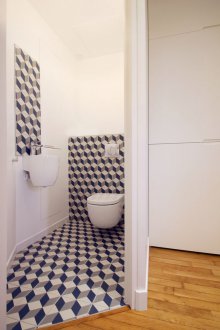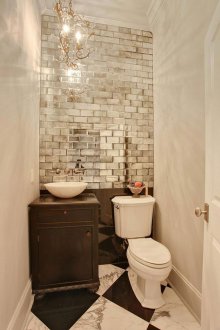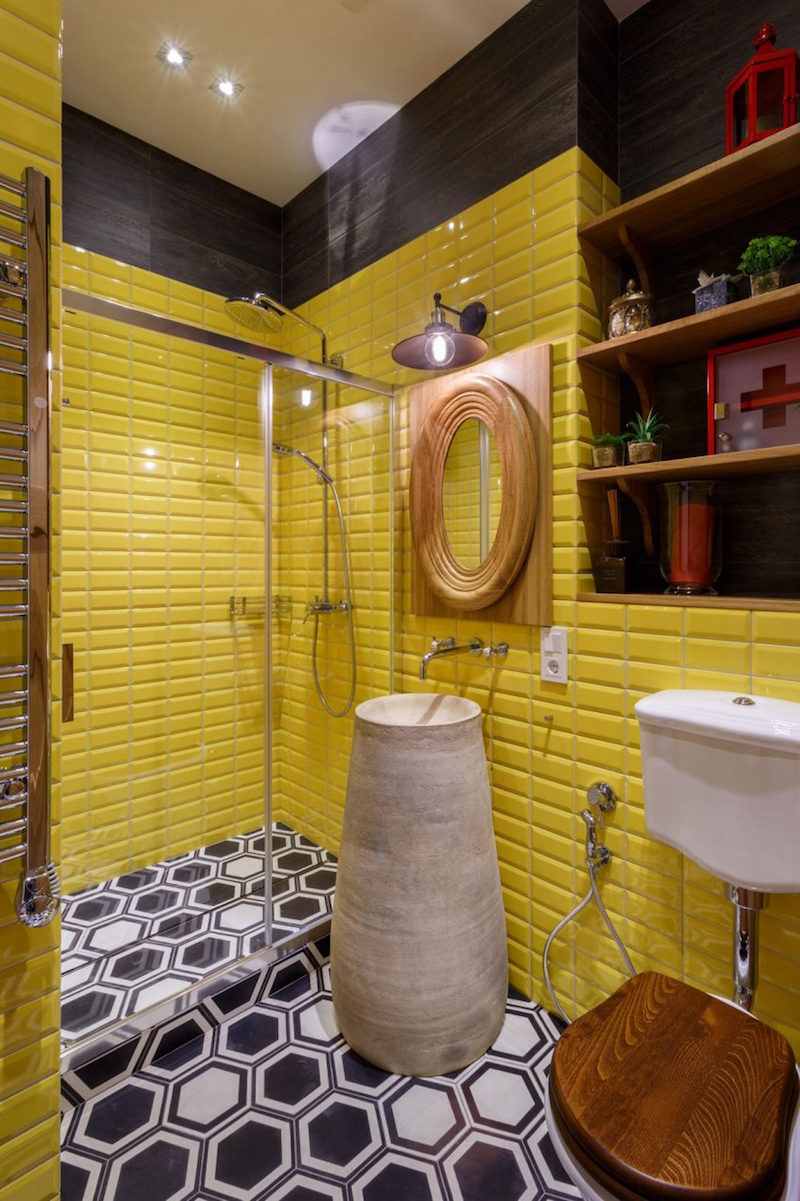Tile for the toilet: how to choose and lay it yourself (62 photos)
Content
Tile for the toilet usually requires careful selection, since the wrong color will make the small room very tiny, and the wrong material will crack in a couple of years. It is important to remember a lot of little things: everything matters, from size to drawing; that it is impossible to put wall tiles on the floor, but to stick the floor on the wall; that laying tiles in the toilet will take a couple of days.
And the very first thing to remember is that ceramic tiles are placed in the toilet, which has a whole list of specific advantages:
- Biologically passive. Fungi and mold adhere to the tree and stone, which is quite important for the toilet. In wood panels, parasites can also start, linoleum covered with a fungus. Tiles are used even in medical institutions.
- It does not cause allergies. Wood can affect a sensitive body, as well as a variety of materials containing plastic. There is no such problem with tiles.
- Resistant to moisture. Ceramic tile for the toilet is also an excellent solution and therefore - even if a pipe breaks in the room, nothing will happen with the coating on the floor or on the walls.
- Easy to wash. Finishing the toilet with tiles allows you to forget about the difficulties that are required when caring for wood or natural stone. It is enough to wipe it from time to time with a wet rag with soapy water and everything will be clean and radiant, as on the first day of installation.
- Durable and poorly worn. Even if you walk on it every day - and the floor tile for the toilet is designed to be walked on constantly - it will not change its properties, will not lose color and will not be wiped.
- Resistant to fire. If the family has a smoker, tile for the toilet will be an excellent solution also because it will make the fire completely unbelievable. Ceramics do not burn and are generally insensitive to temperatures.
- Aesthetics. The options for finishing the toilet with tiles are truly endless, since there are a huge number of its types. Different colors, sizes, textures - all this allows you to endlessly experiment with design decisions.
Of course, ceramic tile has a drawback - it is quite fragile, and if you drop something heavy on it, especially from a certain height, it will crack. It also requires accuracy in styling - even a person who has not been involved in repairs in his life can carry out the process, but he will have to spend a lot of time and invest in it. However, first you need to decide how to choose a tile for the toilet.
How to lay tiles in the toilet: types, colors, installation methods and their combinations
Laying tiles on the floor in the toilet is a kind of art that requires a creative approach and possession of all the variety of information about what kind of tile happens, how it looks, how it can be laid and how it all fits together.
So, ceramic tile happens:
- Maolica. Lightweight, double-fired tile that is durable.
- Terraglia. Also a light tile that is fired twice, but is made from more expensive raw materials. By itself, it is white, is covered with color even during the firing process and is covered with just one coating layer after. Very bright, saturated color.
- Cotto.A heavy tile that does not glaze and therefore has the color of burnt clay - different shades of red, red, brown. Its surface is porous, the edges are uneven.
- Porcelain tile. It is also not covered with glaze, but is made using a press and can be polished. It is distinguished by durability and the fact that even if cracked, it will retain a uniform color.
- Clinker. The most durable option is a heavy tile that is used for floors. It is glazed and therefore differs in a wide variety of colors.
- Textured tile. If ceramic tile was invented in principle several centuries ago, then its textured version is a recent invention. It imitates - both in color and to the touch - other materials: wood, metal, mirror surface. It is expensive, somewhat more fragile than the rest, but it allows the flight of design thought to unfold in full breadth.
- Mosaic. Strictly speaking, it is not a separate type of tile, but simply a small colored tile of other types, which is suitable for the design of complex surfaces: arches, uneven differences, bulges or depressions. Often makes up a pattern or pattern.
Mosaic is laid both on the floor and on the walls, depending on the material, as well as textured tiles. Clinker, porcelain stoneware and cotto are too heavy and are laid exclusively on the floor, and terraled and mosaic, because of their lightness, ideally lie on the walls. In order for the result to look, the choice of tile should take into account the laying method, among which:
- Classical. The easiest option - the tile is laid directly parallel to the floor. It can be vertical and horizontal - depending on how you orient the narrow and wide sides. You can also lay out patterns, from the simplest chess to the more complex.
- Diagonal. It is much more difficult to perform, because you have to buy triangular tiles and half tiles that will fit on the sides, but the result is worth it. It looks spectacular, especially if you apply several colors and do everything carefully. Usually they use square tiles, but you can also use elongated tiles - in some rooms it will look good.
- Brick. A rectangular tile is used, which is laid according to the principle of an ordinary brick wall - two above each tile. It looks especially good with cotto - it allows you to create a feeling of a brick wall in an old house.
- "Christmas tree". The tile is laid "triangle", the narrow side to the narrow side. It looks especially good if you apply textured tiles made under a tree.
- Mosaic. A small tile is applied, which is laid so as to form a complex pattern or pattern. With enough imagination, you can use programs that form pixel images to create a picture to taste.
- Combined options. Allow to combine different styling options and different material options. They can look very impressive, especially if applied according to the shape of the room and the required visual changes.
No less important is the color of the tile for the toilet - the overall color scheme should be obtained, in which all shades will fit. The most popular options remain:
- Dark bottom, light top and walls. The tile in a small toilet most often looks exactly like this, since this allows you to visually expand it.
- Light bottom and ceiling, dark walls. If you need to visually stretch too wide a room with a low ceiling.
- Light walls, dark floor and ceiling. If you need to visually expand too narrow a room with a high ceiling.
- Bright accent. One wall or some element of decor - for example, the intricate ornament on the wall behind the toilet bowl - attracts attention and also visually expands the room.
It is considered reasonable to use cold shades of blue, green, yellow, pink, pastel colors. This allows you to visually expand the room.It is also useful to use different shades of the same color - this is a good way for those who are not sure that they will be able to beautifully combine several colors.
Vertical stripes on the walls raise the ceiling - the design in the small toilet should be directed exactly to this. But horizontal stripes visually reduce the height of the ceiling and expand the room.
Separately, it should be remembered that if you want to use a mosaic, 3D tile for the toilet or complex decorative elements, then it is better to place them at the eye level of the person who entered. Such a trick allows you to divert attention from any shortcomings of the room.
Only correctly selected tiles will create the desired impression. Therefore, before you start laying out the tiles in the toilet with your own hands, it is best to draw a sketch in which to combine the color and the way of laying, and see how it looks as a result.
How to tile in the toilet: preparation
Tile in the toilet with your own hands will not look good if you put it on old paint, uneven floor or the remains of the previous tile. Therefore, first of all, you should take care of the state of the foundation:
- remove dust and dirt with a brush first, then rags;
- peel off the paint, chop off the remnants of the old tile;
- fill the floor with a screed - a self-leveling compound that will remove all surface irregularities, but will dry from several hours to several days;
- First coat the walls with a primer (you can use a spray gun for this), then densely coat with plaster and sand, and then coat with a primer again.
The result should be a flat surface on the walls and a flat surface on the floor. If there are large holes in the walls, they must first be covered with plaster and covered with a plastic mesh, which will help to keep the second layer.
The main thing at this stage is accuracy. If wallpaper can be glued on curved walls, then wall tiles for the toilet is glued only on a flat surface.
How to put tiles on the floor in the toilet
The floor tiles in the toilet can be any - large tiles, rectangular tiles, mosaic tiles for the toilet - they are all attached according to the same principle. On the glue. This is done sequentially:
- the room is measured, carefully calculated exactly how many tiles it will take;
- the tile is laid out according to the sketch drawn at the preparation stage and, if necessary, is cut and leveled so that everything lies perfectly;
- in a bucket, which is not a pity (most solutions are not washed off), glue is diluted, which is prepared according to the instructions on the package and which can easily be stirred with a stick, and not with an electric tool;
- the tile is smeared with glue and laid in its place;
- excess glue is removed from the seams with a soft rag, the surface dries;
- then a solution is applied that will make the gaps between the tiles not so obvious - it is enough to dilute it, put it on a spatula and carefully put it in, removing the excess with the same rags;
- when it dries, you can wash the tile completely.
The combination of tiles in the toilet requires imagination and a flight of thought - although you can make a standard option, in the loft style, in the ethno-style, in the classic style, choosing your favorite on the Internet.
The main thing is that the process was a pleasure, to put the tiles in the toilet was interesting and funny, and not routine and boring. And, of course, the main thing is that the result is satisfactory. And if for this you need a complicated mosaic, a warm floor or mirror elements - all the more interesting.
